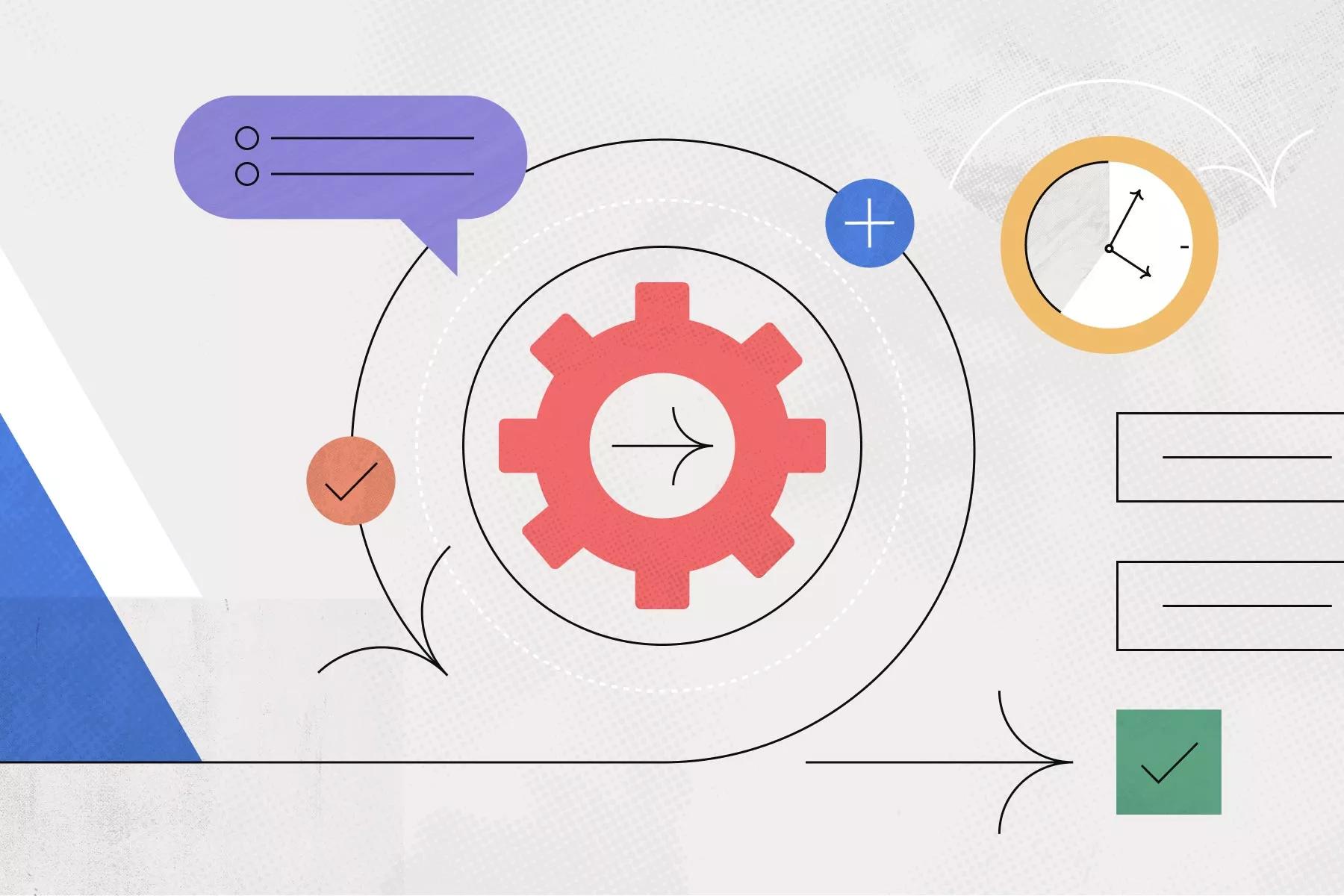
How Data Analytics Bring Up Agile Effectiveness at the Enterprise Level?
Agile’s Fundamentals in a Single Shot!
Agile Analytics, which was initially introduced by a team of developers as a quicker and more useful technique of software development, is now revolutionizing how businesses are conducted. Today, agile is used for implementation by banks, producers, R&D facilities, hospitals, and perhaps even airport terminals. Modern frameworks like Large Scale Scrum, Nexus, and so forth became more well-known as the scope and application of Agile expanded. Organizational structure is drastically altering as a result of business and enterprise agility.
Agile Analytics fundamental tenet is that businesses are complicated adaptive systems, not just a collection of sequentially functioning divisions. The COVID-19 outbreak hastened the implementation of Agile because businesses have learned that adopting advanced technologies that are adaptable and responsive to consumers’ constantly evolving demands is essential to their existence and preservation. Agile accomplishes this.
Top Benefits Landed by Agile Analytics to your Business
Effective business intelligence and data analytics systems require extensive development and implementation. According to statistics, more than 50% of projects fail to produce on time or to fulfill and satisfy the requirement’s ultimate purpose. Such problems have easy avoidance nature, given the scope specification at an early stage. In summary, then:

- It encourages people to take ownership of their success
- Users may easily exchange comments and make adjustments as a result of early iteration, preventing last-minute surprises and negative customer satisfaction
- By adopting the scale-out version of the software across numerous functions, it lowers project costs
- It permits self-service
- It offers variety
- Data Visualization is possible
- Establishes a connection to the data-driven revolution
- Improved administration and control
The Importance Underlying Agile Analytics
Conventionally, project managers have concentrated on WBS planning, which entails predetermined planned work. The developers’ inputs are used by project managers to create project plans; in this case, how well the team executes the scheduled work as planned serves as the major indicator of success.
Traditional approaches put more emphasis on the task manager and make sure whether or not the projects are in accordance with the plan. Team management is the one with high consideration in agile project management than task management. They guarantee the development team has all they require for success and protect the group against interruption and stress.
They give the group the capacity to organize itself and manage job fulfillment. Agile analytics teammates exercise daily synchronization for 15 minutes. In summary, clients need predictive analytics that can complement choices taken today and company requirements for analytics change rapidly.
Clients demand insights that are more timely and useful. Predictive models’ utilization of data with less latency was made possible by data warehouses. The analytical workflow itself is significantly affected by innovation.
A Closer Look onto Agile Insights
There may be variances in the breadth and rigor of Agile deployment when it is done at volume in businesses. Businesses employ a variety of evaluation methods to gauge how mature an agile culture is as a sign of real agility. These evaluations typically take into account elements of systems, procedures, technologies, people, and environment.
Agile qualities are measured by organizations using key performance indicators (KPIs) at the team, programme, and enterprise levels. To avoid overcomplicating agile’s natural simplicity, most of these metrics have been kept very simple in their construction and design. Burn-down charts, for example, measure progress of completion of work.
A team metric called velocity reflects how much work the team accomplished during each iteration. While they are quite helpful in terms of visualizing the execution of the product backlog, there may be underpinning trends, themes, and revelations in an agile implementation that may be recognized in order to maintain and keep improving agile at a corporate level.
As the volume and complexity of this information will be highly diversified, firms must use increasingly advanced data analytics methods and strategies to unearth these findings. To comprehend the caliber of user requirements is one instance. A user narrative needs to be straightforward and understandable, almost everything agile practitioners concur. Some people utilize the INVEST acronym to improve the reliability of user stories. INVEST stands for Autonomous, Negotiable, Meaningful, Exemplary, Compact, and Provable.
We can determine if the user stories produced by the group are of high quality and adhere to the INVEST pattern using a text processing technique in natural language processing. Similarly, we might apply a predictive and prescriptive method to assess the rate of success of deployments to know whether a product team would be able to deliver a product increment successfully and on time.
Practical Use Cases That Agile Analytics Possesses!
Here are 5 ways of how data science may be used in Agile projects to visualize and derive insights –
Analyzing Release Preparedness With Decision Trees
Any Agile methodology may find it essential to respond to the inquiry “Are we ready for the release?” Although release-on-demand methodologies are encouraged by paradigms like Scaled Agile, it is rarely clear whether releases carried out at the customer’s request will live up to their expectations. Although agile methodologies are 3 times more likely to thrive than traditional waterfall models, studies have indicated that approximately 47% of agile initiatives are pressured, and 11% fail on client release.
To get around this, it is possible to determine the preparedness of release utilizing a number of variables. The integrity of the code, the pace at which stories are burned up, the amount of testing done, the effectiveness of the defect-fixing process, and the management of the product owner’s objectives will all play a role in the release’s success.
By specifying thresholds at every stage to decide whether the team should launch or not, these elements can be modeled using the Random Forest algorithm (and any comparable Decision Tree approach). The same process can also be used to assess the likelihood that a release will succeed. Following this, it is up to the company executives to decide whether to proceed with the launch given the probability.
Forecasting Work Flow Predictability With Predictive Analytics
Many firms look for dependability and agility together while delivering goods and services. Although agile methodologies call for teams to be enabled to self-organize around purpose, it can be difficult to foresee the results the group will provide in upcoming releases. This is a result of Agile’s fundamental character, which emphasizes appreciating flexibility and intricacy over needlessly (or artificially) adhering to an unnecessary plan.
To strategize for financial influx, market releases, as well as to address stakeholders, corporate leaders may want to be aware of the product’s yield and the timeframe that goes along with it. Data science predictive analytic approaches can be used to calculate the dependability of economic value.
Utilizing time-series modeling techniques, the functionalities given during the course of iterations can be utilized to forecast the release of the following version. Modeling the elements influencing the results of delivery is still another choice. Both of these methods will give business managers a reasonable perspective from which to make crucial judgments regarding the estimation of delivery results.
Determining User Story Quality With Text Analytics
Perhaps one of the most crucial objects in the deployment of agile is probably user stories. The layout, the coding, and the integrity of the test cases are prone to adverse effect if the user stories are of poor quality. Additionally, if the user requirements are not reasonably specific, it will be difficult for the developer team to provide high-quality goods and services because it will be confusing to programmers, designers, testers, and even consumers.
Although user story effectiveness cannot be quantified, evaluating it is not as simple. Sophisticated analytics methods like text processing can be helpful in this situation. An agile tool’s user requirements can be scanned by a natural language processing algorithm. this could further determine their coherence, scope, and uniformity. Improved approximation will result from the ability to rewrite terribly written user stories. This is so as to make sure that they are more in line with the desired benchmark.
Administering Technical Debt With Database and Code Analytics
If not handled promptly, technical debt will follow the product team around for a very considerable time. Broadly, it is the cost that one is comfortable to spend for satisfying the client’s pressing needs. According to CIOs interviewed for a McKinsey study [Reclaiming Tech Equity, 2020], almost 20% of the funding for fresh product development is used to address technical debt-related problems.
For organizations, this equates to millions of dollars. There’s an undoubted impact on the sustainability and extensibility of the product, given the long-term accumulation of this debt. It carries out Databases and Coding analysis, determines the restructuring time to keep technical debt under control.
Evaluating Employee Engagement and Motivation With Behavioral Analysis
Agile methodologies’ focus on personnel practices is one of the main factors driving firms to adopt them. Agile offers an empowered and highly engaged workforce. This is essential to introducing the necessary innovation into products and long-term employee satisfaction. With various indicators, including Indices, Employee Engagement Score, Employee NPS, and others, one can gauge employee satisfaction.
The majority of these measures continue to lag indications. They will provide the employee satisfaction post facto outcome following the time frame. If businesses and human resources could continuously identify indications of contentment or unhappiness that could be course-corrected, that would be advantageous. A/B testing and other behavioral analytics tools can be used in this situation. They could be used to ascertain whether or not employees are enthusiastic about the modifications and policies being implemented in an agile manner of working. In order to produce the best outcomes, an individual must be in a state of flow and motivated from within. Analytical techniques are used to investigate this impact.
Agile Analytics: Best Practices Worth Your Minute!
It aims to accomplish a few objectives, including team partnerships, customer loyalty, continuous improvement in place of last-minute surprises, and everyday employee participation. It becomes important to concentrate on the early and frequent or iterative delivery of business value all through the development lifecycle while developing business intelligence or analytics applications. Client satisfaction and self-organized groups are priorities. The Agile Alliance has produced a set of guidelines for creating software, including
Every few months, it follows incremental delivery.
- Even at the very end of development, it encourages requirements changes
- Software is often provided following a few weeks of revisions
- Offer business intelligence professionals a supportive workplace and the freedom to complete the task at hand
- The most effective method of communicating with and within a development team is one-on-one or in-person interaction
- Keep the project ‘s range, time, and expense in check
- Learn how to become more efficient and use a result-oriented attitude on a routine basis
- Teams that are collaborative and self-managing come up with strategies. They also decide on the most effective approach to handling tasks collectively
- Agile firms track their success using three straightforward metrics: improved business results, more effective and engaged teams, and satisfied clients
The Final Lines:
Over the past several years, data science has improved to handle extremely complex events. It, now drives many of the AI applications that we see more and more of around us. Nevertheless, there is still little use of data science in product development, particularly in agile environments. Teams, businesses, and ultimately customers may benefit greatly if enterprises could harness the power of analytics. Such analytics can prove useful to uncover hidden insights and trends in an Agile implementation.




